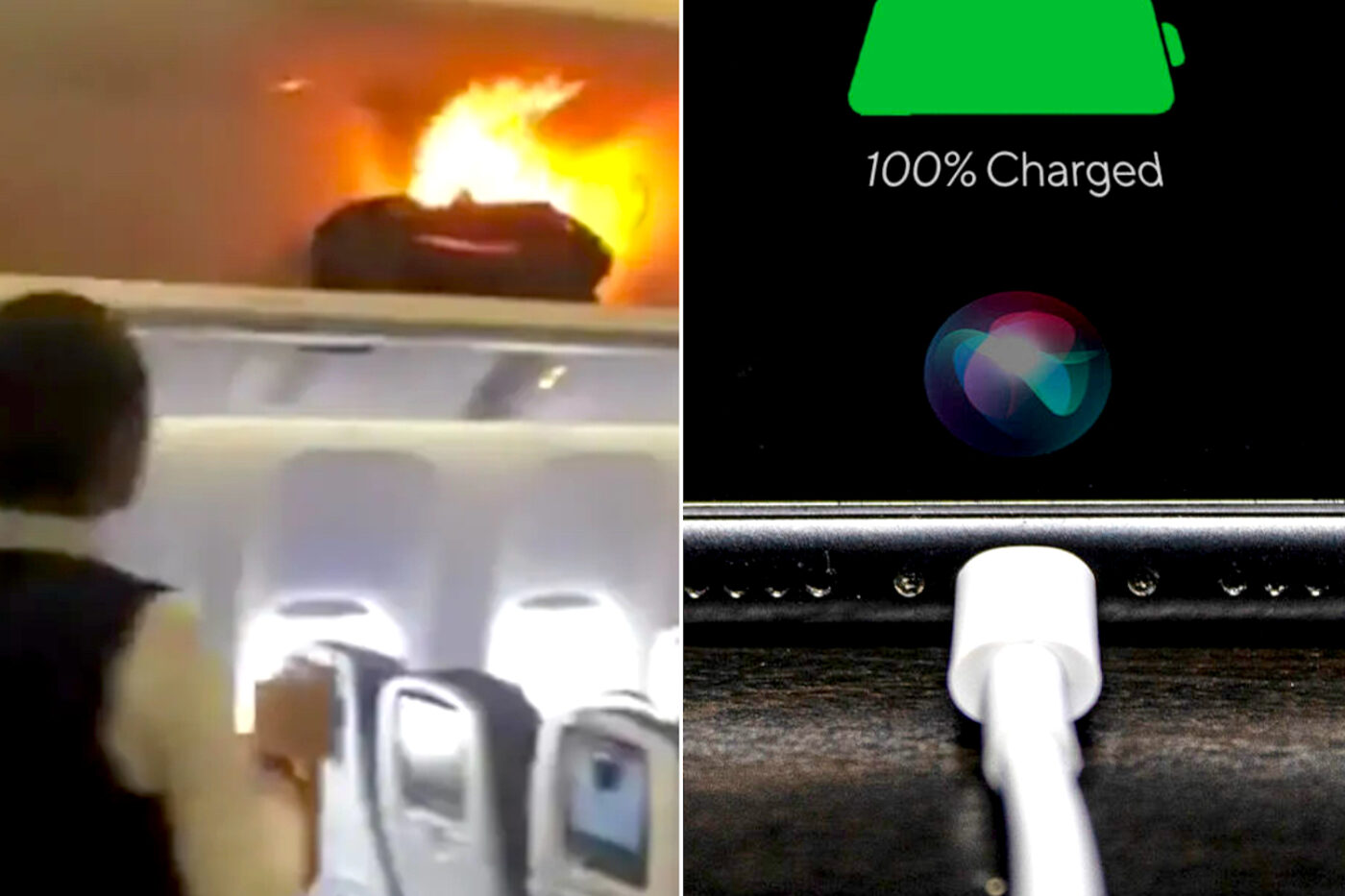The United States Federal Aviation Administration (FAA) has issued a stern warning to airline passengers, urging them never to travel with their devices fully charged due to an increased risk of cabin fires.
With all the unexpected stumbling blocks that travel can bring with it — from a man urinating all over business class to a disgusting sock-stuffed seat, from a woman being publicly weighed in the airport to a hostess being beaten with an in-flight phone — the very last thing you’d want is to unintentionally cause a fire or explosion on your flight. That’s why the FAA has stepped in this week to announce a suggested change to the way you prepare your devices for travel, which may seem counterintuitive but could, they believe, save lives.
The FAA’s warning was made public through a post on X — the Musk-owned platform formerly known as Twitter) — featuring a video excerpt from the department’s podcast, The Air Up There. The podcast episode, titled ‘Fly Safe with Lithium Batteries,’ features advice from the FAA’s fire safety branch manager, Robert Ochs. Since its release on Monday, the video has garnered nearly 37,000 views and a slew of shocked comments, as reported by The Sydney Morning Herald.
WATCH: A very different kind of in-flight explosion from a Chinese ‘Time Traveller’.
The FAA’s caption accompanying the video asks flyers to reconsider charging their devices to 100% before boarding, stating that “a full charge may increase the chances of a fire. If you won’t be using it on your flight, why risk it?” While the risks associated with lithium-ion battery-powered devices like smartphones are far from being new — with unexpected ignitions becoming a regular feature in headlines for almost a decade now — Ochs emphasizes that maintaining devices at a lower battery level during the flight can significantly reduce the risk of overheating and potential fires.
He explains his thoughts as follows:
“If [the device is] at 30 percent, say, or lower, it’s less likely to undergo thermal runaway, and the reaction would be less severe.”
Robert Ochs, FAA Fire Safety Manager
Thermal runaway is a process in which a lithium-ion cell enters an uncontrollable self-heating state. Associate Professor Mark Gregory, a technology expert at RMIT University, describes it as “a build-up of heat that cannot be dissipated quickly enough to prevent gas being given off, a fire, or explosion.” He agrees that fully charged lithium-ion batteries carry a significantly higher risk of thermal runaway, and added that maintaining the charge between 30-80% actually encourages optimal performance compared to a full charge.
Before getting on an airplane, do you charge your lithium powered devices to 100%? A full charge may increase the chances of a fire. If you won’t be using it on your flight why risk it? Learn to prepare your devices for a safe flight at https://t.co/y5CqWLYtE7. #podcast #PackSafe pic.twitter.com/xzg611Hfw5
— The FAA ✈️ (@FAANews) July 23, 2023
The hazards of transporting fully charged lithium-ion batteries on aircraft are well-documented, with many airlines recently launching policies whereby if a passenger drops a device between seats they ban cabin crew from searching for it, given recent incidents of explosion and ignition during retrieval, such as this case at New York’s JFK airport in 2016. The head-scratching element in all of this is that despite the risks, airlines are increasingly integrating devices into the inflight experience…
Electronic boarding passes on smartphones and seatback screen retirements in favour of wireless direct content streaming to passengers’ devices are quickly becoming standard practice. As a result, having a powered device during transit has become absolutely crucial for making the most of air travel. With ticket prices still sky-high, you can understand why some people might push back against being told to let their devices run dry.
So the next time you’re flying, remember: while fully charged devices might keep you entertained, they could also add an unwelcome twist to your journey. If you want to avoid turning an enviable experience into an explosive one, it’s better to run on fumes.
